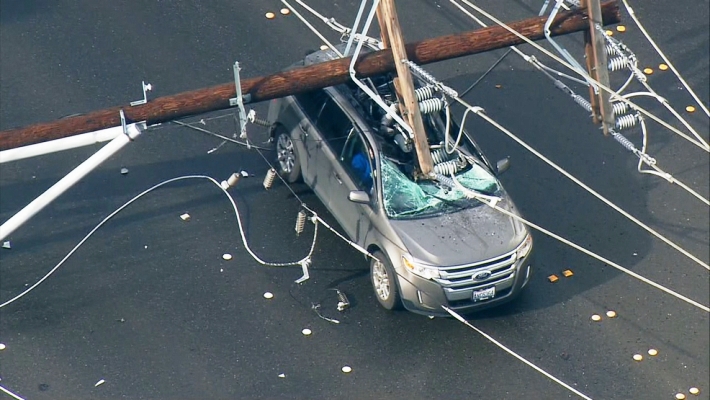Navigating Emergencies: A Comprehensive Guide on How to React if a Power Line Falls on Your Car

Introduction
Encountering a situation where a power line has fallen onto your car can be a daunting and potentially life-threatening scenario. The safety of both yourself and those around you becomes paramount. This comprehensive guide aims to provide you with a step-by-step approach on how to react in the event that a power line falls on your car, ensuring that you can respond swiftly and effectively to mitigate risks and prioritize safety.
- Stay Calm and Assess the Situation: In any emergency, maintaining a calm demeanor is crucial. Take a deep breath and assess the situation. If you can do so safely, look around to see if there are any immediate dangers, such as fire, smoke, or other hazards.
- Do Not Exit the Vehicle: Your vehicle can act as a protective shield against electric shock as long as you stay inside. Do not attempt to exit the car, as the ground around it may be electrified. Exiting the vehicle could result in severe injury or even fatality.
- Call for Help: Use your mobile phone to call emergency services immediately. Dial the emergency number (e.g., 911 in the United States) and provide them with your location, details of the situation, and any other relevant information. Emergency responders are trained to handle these situations and will guide you through the necessary steps.
- Warn Others: If it is safe to do so, and you have the means, warn others in the vicinity to stay away from the fallen power line. Keep in mind that the ground around the fallen line may be electrified, and caution others to maintain a safe distance.
- Stay Inside the Vehicle Until Help Arrives: Remaining inside your car is the safest course of action until professional help arrives. Emergency responders will coordinate with utility companies to ensure that the power line is de-energized before any attempts are made to remove it from your vehicle.
- Avoid Making Contact: Inside the car, avoid touching any metal surfaces, as they could be electrified. This includes the doors, windows, and any other metallic components. Stay seated and keep all body parts away from the car’s interior metal surfaces.
- Use Non-conductive Items: If you need to exit the vehicle due to an immediate threat, use non-conductive items such as a rubberized tire or a dry wooden object to create a path away from the car. Be cautious and move slowly, ensuring that you do not make contact with the vehicle or the ground simultaneously.
- Wait for Professional Assistance: Do not attempt to remove the fallen power line yourself. Wait for trained professionals, such as utility company workers or emergency responders, to assess the situation and take the necessary actions to make the area safe.
- Provide Information to Responders: When emergency responders arrive, provide them with any additional information about the incident. Share details about the circumstances leading up to the power line falling, as this information can aid in their assessment and response.
- Seek Medical Attention: Even if you do not appear to be injured, it is crucial to seek medical attention after such an incident. Electric shocks can cause internal injuries that may not be immediately apparent. Inform medical professionals about the situation for proper evaluation.
Conclusion
Encountering a fallen power line on your car can be a frightening experience, but knowing how to react can make a significant difference in ensuring your safety and the safety of others. By staying calm, following these guidelines, and prioritizing communication with emergency services, you can navigate this challenging situation with confidence. Remember, safety is the top priority, and professional assistance is crucial in handling the complexities of a fallen power line. By being prepared and responding appropriately, you can contribute to a safer outcome in the face of this unexpected emergency.






